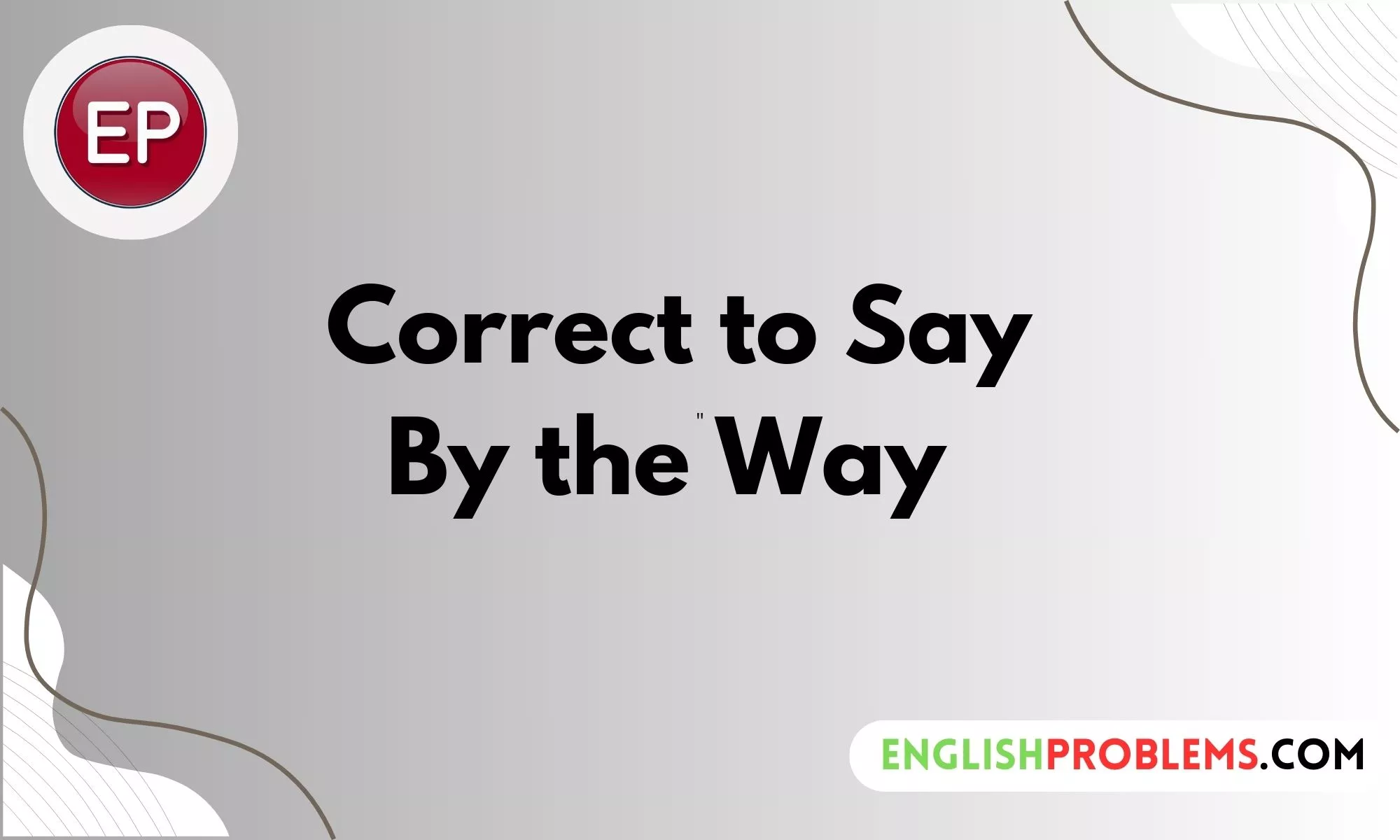The phrase “by the way” is a staple in everyday conversation and written communication. It’s often used to introduce additional information or to shift the topic of discussion smoothly. But have you ever wondered about its correctness and usage?
In this article, we will delve into the nuances of “by the way,” exploring its meaning, proper usage, and alternatives.
Understanding the Phrase “By the Way”
Definition and Meaning
“By the way” is an idiomatic expression used to introduce something additional or supplementary to what was previously mentioned. It functions as a transitional phrase that helps steer the conversation or text to a new but related topic.
Example in Conversation:
“I enjoyed our meeting today. By the way, I wanted to mention that our next team project is due next week.”
In this context, “by the way” is used to add information that might not be directly related to the main topic but is important to convey.
Etymology
The phrase “by the way” has been in use for centuries, with its origins tracing back to Old English. Originally, it meant “along the road” or “incidentally.” Over time, its meaning evolved to represent an incidental addition or a shift in topic during communication.
Common Uses of “By the Way”
Conversational Context
In everyday conversation, “by the way” serves as a way to introduce an additional thought or piece of information that the speaker wants to share. It’s a tool for transitioning to new subjects smoothly without abrupt changes.
Examples:
- “I’m going to the store later. By the way, do you need anything?”
- “We discussed the project deadline earlier. By the way, have you seen the latest update on the project status?”
Written Communication
In written forms such as emails, reports, or casual texts, “by the way” functions similarly. It helps in introducing additional points or shifting topics seamlessly.
Example in an Email:
“Thank you for your feedback on the report. By the way, I have attached the revised document for your review.”
Using “by the way” in this manner helps maintain a conversational tone even in written communication.
Is “By the Way” Grammatically Correct?
Grammatical Analysis
Grammatically, “by the way” is considered a parenthetical expression. It functions to insert supplementary information into a sentence without changing the core message.
Example:
“The meeting is scheduled for 10 AM. By the way, please remember to bring your reports.”
In this sentence, “by the way” introduces an additional piece of information related to the meeting but doesn’t alter the primary statement.
Correct Usage
To use “by the way” correctly, ensure it adds value or context to the conversation or text. It should be placed where a natural transition can occur, and it should not disrupt the flow of the main message.
Tips for Correct Usage:
- Use it to introduce related but supplementary information.
- Avoid overusing it to prevent cluttering the conversation or text.
- Ensure it fits the conversational or written context smoothly.
Alternatives to “By the Way”
While “by the way” is versatile, there are several alternatives that can be used depending on the context. Each alternative carries a slightly different nuance, so choosing the right one can enhance clarity and tone.
Similar Phrases
- Incidentally: Used to introduce information that is tangential to the main discussion.
- “Incidentally, did you hear about the new policy changes?”
- Speaking of which: Used to segue into a related topic.
- “Speaking of which, have you finished the report?”
- On a side note: Introduces additional information that is not central to the main topic.
- “On a side note, we need to discuss the upcoming team-building event.”
- As an aside: Similar to “by the way,” used for off-topic remarks.
- “As an aside, I read an interesting article on this subject last night.”
When to Use Alternatives
- Formal Communication: Use alternatives like “incidentally” or “on a side note” in formal writing or professional settings.
- Casual Conversations: Phrases like “speaking of which” and “as an aside” work well in informal conversations.
Misconceptions and Common Mistakes
Misunderstandings
One common misconception is that “by the way” is an overly casual phrase. While it is informal, it’s perfectly acceptable in both casual and certain professional contexts. The key is to use it appropriately according to the tone and formality of the communication.
Frequent Mistakes
- Overuse: Using “by the way” too frequently can disrupt the flow of conversation or text.
- Incorrect Placement: Placing it awkwardly in a sentence can make the information feel out of place.
- Redundancy: Avoid using “by the way” to repeat information already conveyed.
Correct Example:
“I wanted to discuss the quarterly results. By the way, have you reviewed the latest figures?”
Incorrect Example:
“By the way, we need to finalize the budget. By the way, have you checked the expense reports?”
Conclusion
In summary, “by the way” is a useful phrase for adding supplementary information or transitioning to related topics in conversation and writing. Understanding its proper usage and alternatives can help you communicate more effectively.
Final Thoughts
Using “by the way” correctly ensures your communication remains clear and engaging. Remember to choose the right transitional phrase based on your context and avoid common pitfalls to maintain effective dialogue.
Call to Action
Practice using “by the way” in your daily conversations and written communication. Experiment with its alternatives to find the best fit for different scenarios.
Additional Resources
Further Reading
- Books on English Idioms: Explore books like “The Idiom Connection” for more on idiomatic expressions.
- Grammar Websites: Check out websites like Grammarly and Purdue OWL for additional grammar tips.
Practice Exercises
- Sentence Creation: Write five sentences using “by the way” and its alternatives to familiarize yourself with their nuances.
- Peer Review: Share your sentences with a friend or colleague and get feedback on your usage.
By integrating these insights into your communication, you’ll enhance both your conversational and written skills, making your interactions clearer and more effective.

Lucy Wright combines her academic background with a flair for simplifying the intricate details of grammar. Her practical advice and clear explanations empower readers to improve their writing skills and grasp challenging concepts effortlessly.










